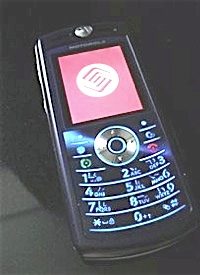
A research arm of the World Health Organization has resurrected the specter of the association of cancer with cellphones, classifying the use of the mobile devices as possibly carcinogenic, much as it has categorized alcohol, coffee, pesticides, engine exhaust, and even working the graveyard shift. The announcement was made on May 31 by the International Agency for Research on Cancer (IARC) after a panel of scientists from 31 countries reviewed dozens of studies on the issue.
The Associated Press reported that following a weeklong roundtable, in which the team of international IARC experts looked closely at studies on electromagnetic radiation found in cell phones, microwaves, and radar, the panel determined that “there was limited evidence cell phone use was linked to two types of brain tumors and inadequate evidence to draw conclusions for other cancers.” The panel’s chairman, Jonathan Samet of the University of Southern California, said that the group “found some threads of evidence telling us how cancers might occur, but there were acknowledged gaps and uncertainties.”
Ed Yong, head of health information at Cancer Research UK (CRUK), told AP that IARC verdict “means there is some evidence linking mobile phones to cancer but it is too weak to draw strong conclusions from. If such a link exists, it is unlikely to be a large one.” A report from CRUK noted that, specifically, “IARC’s panel said that the evidence that mobile phones pose a health risk was ‘limited’ for two types of brain tumours — glioma and acoustic neuroma — and ‘inadequate’ when it comes to other types of cancer.”
Reuters reported that cellphone companies had been waiting anxiously for the IARC announcement, with industry organizations like the international Wireless Association (CTIA) poised to defend their trade turf against warnings that their devices might be harmful. John Walls, a spokesman for CTIA, noted that IARC classification of cell phones as “possible” carcinogens places them in the same category as pickles and coffee. “This IARC classification does not mean that cell phones cause cancer,” Walls said. He pointed out that the IARC panel did not conduct any research, but merely reviewed existing studies. He added that regulatory agencies like the U.S. Food and Drug Administration have determined that “the weight of scientific evidence has not linked cell phones with any health problems.”
In its reporting on the IARC announcement, CNN quoted Dr. Keith Black, chairman of neurology at Cedars-Sinai Medical Center in Los Angeles, as warning that any potential dangers from cell phones may come many years down the road. “The biggest problem we have is that we know most environmental factors take several decades of exposure before we really see the consequences,” said Black. Noting that the radiation emitted by cellphones is similar to that used to power a microwave oven, Black explained, “What microwave radiation does in most simplistic terms is similar to what happens to food in microwaves, essentially cooking the brain. So in addition to leading to a development of cancer and tumors, there could be a whole host of other effects like cognitive memory function, since the memory temporal lobes are where we hold our cell phones.”
And Dr. Henry Lai, a research professor in bioengineering who has studied radiation for more than 30 years, told CNN that brain cancer can take a long time to develop. “I think it is a good idea to give the public some sort of warning that long-term exposure to radiation from your cell phone could possibly cause cancer,” he said.
The New York Times reported that in 2010, “a 13-country study called Interphone, the largest and longest study of the link between cellphone use and brain tumors, found no overall increased risk, but reported that participants with the highest level of cellphone use had a 40 percent higher risk of glioma.” The Times noted parenthetically, however, that even if an “elevated risk is confirmed, gliomas are relatively rare and thus individual risk remains minimal.”
The Times also noted a National Institutes of Health study, published earlier this year in the Journal of the American Medical Association, “which found that less than an hour of cellphone use can speed up brain activity in the area closest to the phone antenna.” Additionally, the study offered a possible explanation “for how low levels of nonionizing radiation could cause harm without breaking chemical bonds, possibly by triggering the formation of free radicals or an inflammatory response in the brain.”
Louis Slesin, editor of Microwave News, said that the IARC announcement “is the first official acknowledgment that we may have a problem on our hands — and it could turn out to be a very big problem. We simply don’t know yet.” He noted that the public “has been given a lot of contradictory and misleading information. The IARC announcement should tell people to follow a precautionary approach.”
But Dr. Meir Stampfer, a professor of epidemiology at the Harvard School of Public Health (as well as a paid adviser for the cellphone industry), emphasized that the IARC panel simply ranked cellphones as a “possible” carcinogen, which is far different from calling them a bona fide health risk. “It’s a very thoughtful group,” he told the Times, “but the important thing is putting it into the perspective of what ‘possible’ means, and the likelihood that this is really something to be concerned about”—something, he said, the evidence doesn’t support. “Comparing this to going out in the sun or any number of normal everyday activities that we’re not really concerned about, I would put cellphones in the lower part of that category.”
Dr. Manny Alvarez, a medical contributor for FOX News, responded in kind, pointing out that very few weeks go by without news about “a new report from health experts that claim cell phone use can be damaging to our health in some way.” He said that if an organization is going to come out with a potentially worrisome announcement, then they need to “tell us specifically you have concluded that after X amount of exposure time there is this much increased cancer risk. For example, if you use your phone more than five hours a day, your risk of developing cancer increases two percent.” Unfortunately, Alvarez added, “that isn’t what they do.” He concluded that until someone comes up with some specific, documented dangers, “I am going to continue using my phone.”
Donald Berry, a professor of biostatistics at the M.D. Anderson Cancer Center at the University of Texas, offered a concurring opinion, telling the AP, “This is not something I worry about and it will not in any way change how I use my cellphone.”
Since cellphones have become the primary electronic communication device for an estimated five billion people worldwide, it is improbable that undocumented health concerns will cause many individuals to stop using them. Nonetheless, for those who worry about potential danger, experts recommend they distance their cell phones from their heads by using earphones or another earpiece. “If there is a risk, most of it goes away with a wireless earpiece,” explained Otis Brawley, chief medical officer of the American Cancer Society.


